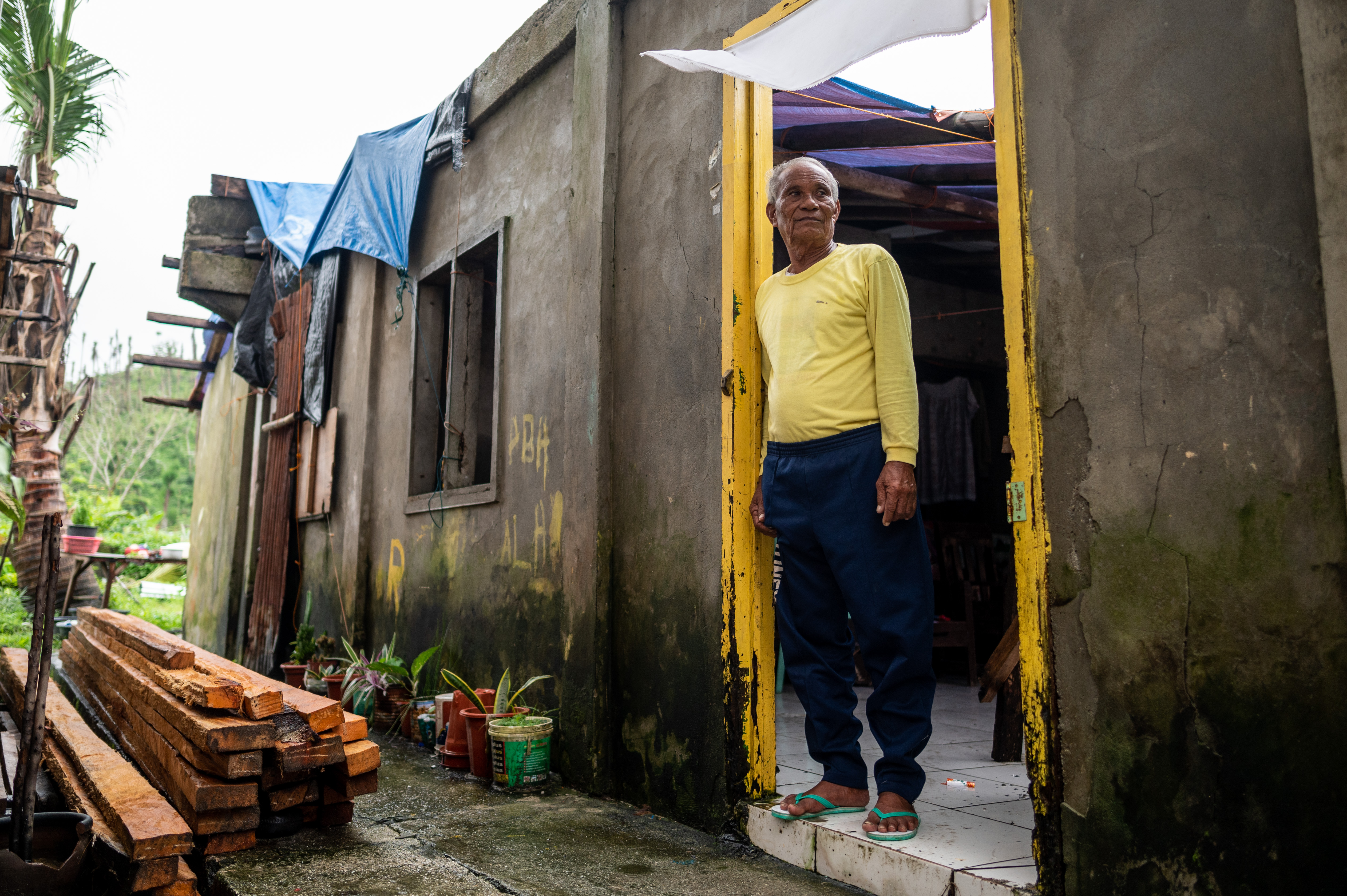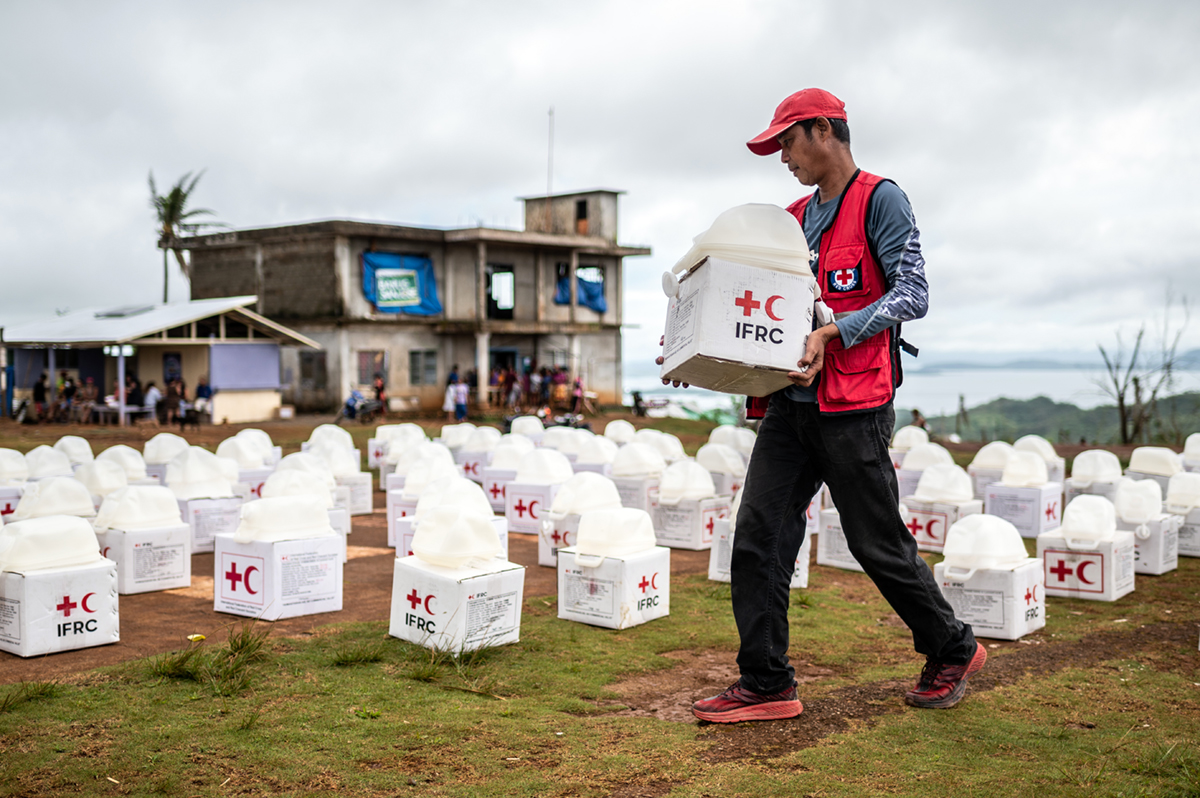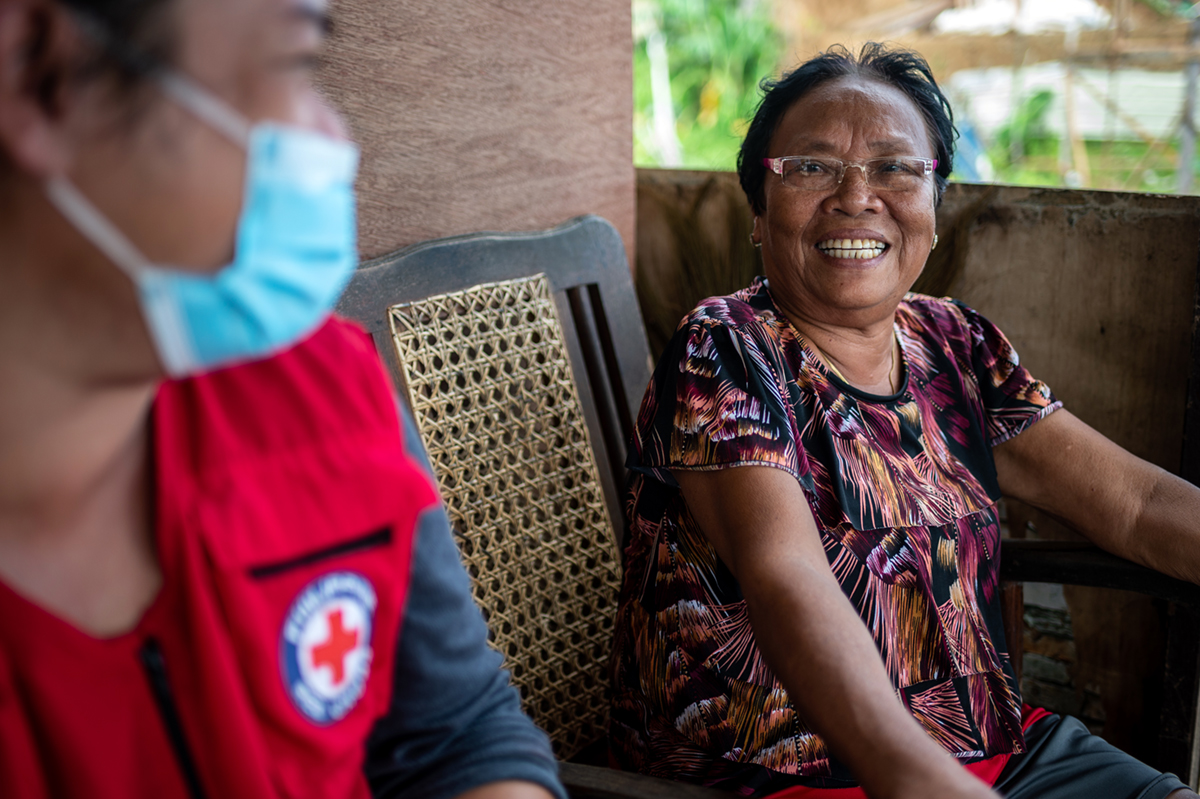Handy system of the data and digital team 510
How you can help people with a simple Excel sheet
Read articleReading time 10 minutes
HANDY SYSTEM OF THE DATA AND DIGITAL TEAM 510
How you can help people with a simple Excel sheet
We all know them: rectangular cells, complicated tabs, many countless numbers. Excel sheets may not seem particularly exciting at first glance, but did you know that you can use them very well to help people? Heleen Elenbaas works at 510, the Red Cross's data and digital team. Thanks to a handy data system, she is supporting people in the Philippines after typhoon Rai.

Blankets, mattresses, kitchen sets, cookers... On Heleen's screen, dozens of rows of household items pass by. She scrolls past cells full of everyday items that most people have in their homes. But if your entire home has been destroyed by a typhoon, you may lose these items all at once.
Heleen Elenbaas went to work as a relief worker in the Philippines after the country was hit by super typhoon Rai. This storm struck devastatingly on 16 and 17 December 2021, making landfall as many as nine times. More than 7.3 million people were affected. Many had to watch as their homes were blown apart by the wind. And such extensive damage was not resolved in a week.
On the right track
Aid organisations like the Red Cross sprang into action immediately. So did Heleen Elenbaas of data and digital team 510. But there is something special about Heleen's work: she does not have a hammer and nails to rebuild the houses. Nor does she visit people to distribute food and water or provide medical assistance. That work is done by her Red Cross colleagues. Heleen makes a valuable contribution in another way: she analyses data.
She is Information Management Officer for the international relief effort in the Philippines. This means that Heleen uses data to make sure that the aid after the typhoon runs as smoothly as possible. The aid is provided by the Red Cross, but also by other aid organisations. By collecting and analysing data from all these organisations in one central place, people can be better helped.

Filipino Red Cruiser carries a WASH kit as it prepares to distribute for residents affected by typhoon Rai in San Jose, Dinagat Island, Philippines.
Knowing where help is needed
"Firstly, we collect data on the situation. In this case: which areas were affected by the typhoon? How extensive is the damage? Are houses uninhabitable? How vulnerable is the area? By mapping this well, you know where most help is needed. This allows us to set priorities," Heleen explains.
She also uses the data to ensure that aid reaches all people. Because that can go wrong quite easily after a natural disaster, Heleen explains. "After a hurricane, for example, it’s possible that different organisations signal that the coastal region has been hit hard. So they go out en masse to that area to help; in the meantime, maybe the houses in a village just two kilometres away all collapsed but nobody goes there. Thanks to good data analysis, you can prevent this from happening. You make sure there are no areas that go unnoticed and that support does not unnecessarily overlap. This way, you make sure everyone gets the help they need."
Keep analysing
Even months after the disaster, it’s important to keep monitoring the progress of aid. This includes checking whether houses have already been rebuilt, whether more building materials are needed and, for example, whether people can cook again.
"All relief organisations let me know every week what they are working on. They tell me exactly where they are working and how many households they have supported. This way, we keep a close eye on how the relief efforts are coming along. We can also give organisations tips on places where help is still needed."
Future of relief assistance
"Good data analysis can provide a big step forward for relief organisations," says Heleen. "In the past, after a disaster, relief workers would go into a room and think about how they were going to help. But that by no means always matched what people needed. One village would then get flooded with kitchen sets and tarpaulins, while in the other village they had not seen an aid worker at all. Data analytics can enable you to help more people faster after a natural disaster has a major impact on their lives. So yes, actually you can do quite a lot for people with an Excel sheet."
Helping people digitally with the Red Cross
The Red Cross is increasingly using data and digital techniques (apps, satellites, drones) to help people. We have a special department dedicated to this: the data & digital team 510. Because we always combine this modern form of help with our global network of enthusiastic volunteers, people get the best help with a human face.

Fedila, photographed in front of her temporary shelter in Bitaug Philippines, almost three months after typhoon Rai destroyed her home.